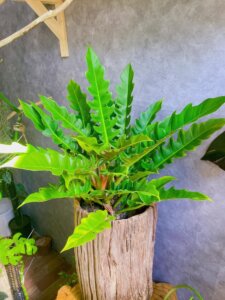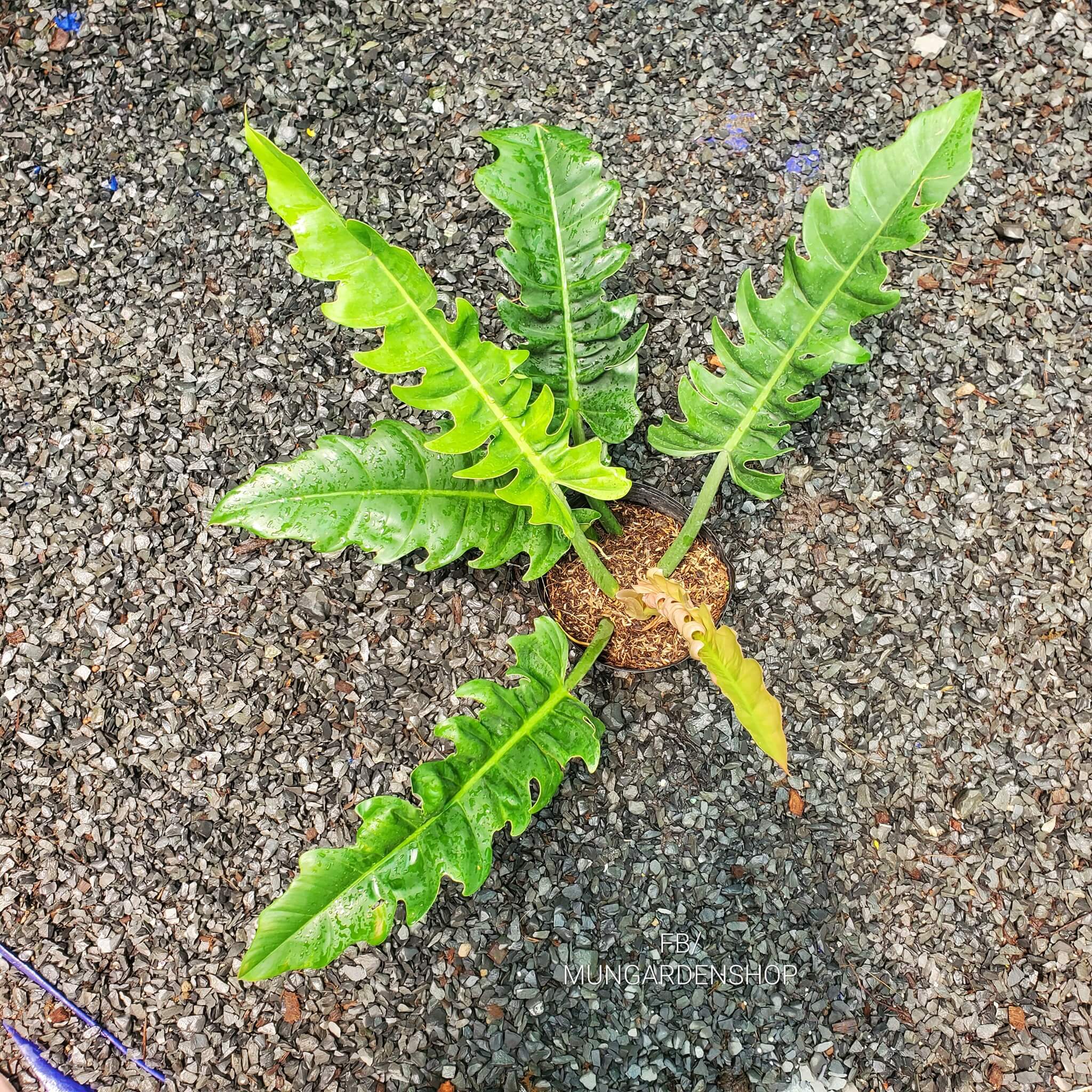Basic Information
The Philodendron Ring of Fire is a highly coveted aroid plant due to its unique sectoral variegation. Its long, striated leaves have a scalloped edge and display up to five colors, including a mystery hue. Though it is slow-growing, the plant’s reward is worth the wait.



Light
This plant thrives in bright, indirect light but can also tolerate low-light situations. If the leaves appear dull, it may indicate insufficient sunlight. To achieve the best color, place the plant near an eastern or southern-facing window to receive at least 8 hours of bright, indirect light daily. During winter, you can use artificial light to supplement the natural light, but ensure to keep the light at least 2 feet away from the plant. The Philodendron Ring of Fire requires stable and consistent lighting conditions; sudden changes in lighting can cause shock, wilting, and irreversible damage. Therefore, it is crucial to maintain stable lighting conditions to keep the plant healthy and thriving.
Tip: Rotate your Philodendron Ring of Fire every few weeks for healthy growth and vibrant foliage.
Water
Make sure to water your Philodendron Ring Of Fire once every 7 to 10 days, especially during the active growing seasons of spring and summer. Although it can tolerate a little underwatering, it’s sensitive to overwatering, which can cause yellow leaves. During the plant’s dormant period in fall and winter, reduce watering to once every two weeks. Before watering again, make sure the top 2 inches of soil are dry. You may want to consider using filtered or distilled water instead of tap water, as tap water may contain chemicals like chlorine or fluorine that could harm your plant over time. Remember, underwatering can cause wilting leaves, so be sure to keep an eye on your plant’s moisture levels.
Soil
The Philodendron Ring of Fire plant requires soil rich in organic matter and well-draining. You can create this type of soil by mixing indoor potting mix, potting soil, peat moss, perlite, vermiculite, and coco coir. The soil must retain some moisture without drying out too quickly. Additionally, the soil should have a slightly acidic pH level ranging from 5.5 to 6.5. Avoid using garden soil or compost as it can obstruct the roots’ growth and cause root rot due to poor
Temperature
This plant flourishes in warm, tropical environments where the temperature ranges between 55-85°F (13-29°C). To prevent its growth from being stunted and its stress levels from increasing, it is important to shield it from temperatures below 55°F. Additionally, it is best to avoid placing the plant in front of air conditioners or heaters as they can cause abrupt temperature changes.
Humidity
The Philodendron Ring of Fire is a tropical houseplant that can adapt to average home humidity levels, usually ranging from 30% to 60%. Unlike some other tropical houseplants, it does not require extremely high levels of humidity. However, it’s important to note that the humidity should not exceed 80%, as this could make the plant more susceptible to bacterial or fungal infections. If you live in an area with low humidity, investing in a humidifier is a good idea. You can place a tray filled with water near the plant or use pebble trays to increase humidity levels around the plant. Keep an eye on your plant’s leaves – if they start to curl or wilt, it could be a sign that there isn’t enough moisture in the air. To keep your Philodendron Ring of Fire hydrated and healthy, you should regularly mist its leaves with room-temperature water.
Fertilizer
To ensure the healthy growth and development of your Philodendron Ring of Fire plant, providing it with a quality feed is crucial. During the growing season, apply a balanced liquid houseplant fertilizer once a month, diluted to half strength. Reduce fertilization to once every 6-8 weeks in autumn and stop entirely during winter. Fertilizer supplements the nutrients it gets from sunlight and supports growth. Applying fertilizer to moist soil helps absorption and reduces the risk of salt buildup, which can lead to toxicity. You may use either an instant-release or a slow-release fertilizer, but be careful of signs of excess fertilizer. If you notice any, flush the soil with water to remove the excess fertilizer and allow the plant to recover before resuming feeding.
Growth Rate
This particular plant has a slow growth rate, and it usually grows up to 3 feet tall. The leaves of this plant can grow up to 24 inches in length and 16 inches in width. To ensure proper growth, this plant requires adequate sunlight, well-draining soil, and support from a moss pole or trellis.
Pet Safety
The Philodendron Ring Of Fire is toxic when ingested by humans or animals due to calcium oxalate crystals. Keep it out of reach of children and pets.
Grow in Semi-Hydro
- Philodendrons, celebrated for their lush foliage and adaptability, thrive in semi-hydroponic systems such as LECA/Pon, thanks to their resilient root systems and preference for consistent moisture.
- Shifting a Philodendron to a semi-hydroponic setting works well using a Nutrient Stagnant Wicking (NSW) method, providing a stable and effective environment for growth.
- Within the LECA/Pon environment, Philodendron roots adapt swiftly, effectively managing any early challenges in adapting to the NSW system.
- For nourishing Philodendrons in semi-hydro systems, a nutrient solution with a concentration around 800-1000ppm is optimal.
- Philodendrons are versatile in adapting to a range of temperature and humidity levels, making them ideal for various indoor settings.
- Regular care involves keeping an eye on the water level in the reservoir and periodically flushing the system to ensure the Philodendron’s healthy and consistent growth.
- If your Philodendron is a climber, it’s a must to look at our Moss Pole guide to have a proper set-up.
Tips
- Repotting: Repot only when roots are visible at the bottom of the pot, about every 2-3 years. Use a container slightly larger than the current one and repot in spring or early summer.
- Pruning: Prune to remove unruly or yellowing leaves, improve aesthetics, or control growth. Use clean pruning shears for this task.
- Pest Control: Regularly inspect for common houseplant pests such as spider mites, mealybugs, and thrips. Use a dilute solution of neem oil for prevention and treatment.
Observe your Philodendron Ring of Fire regularly and adjust care as needed for its best health and growth.
Happy planting! 🌱


